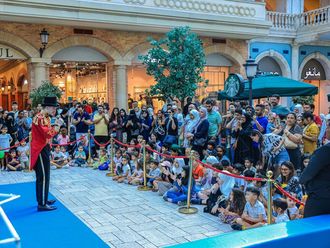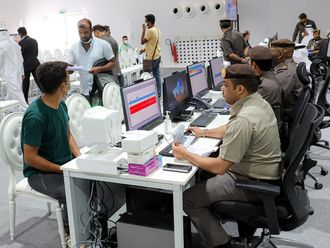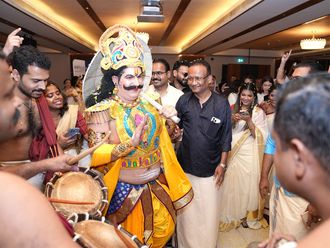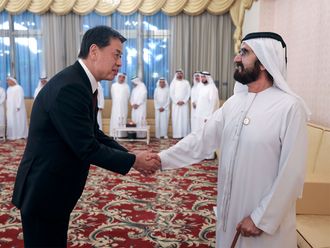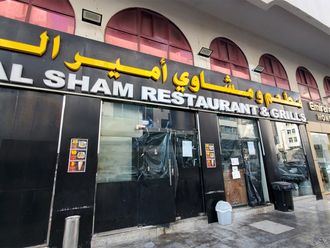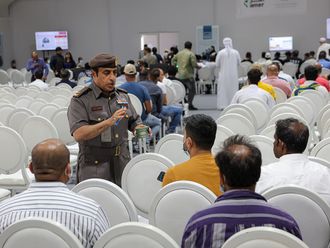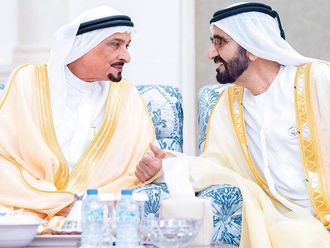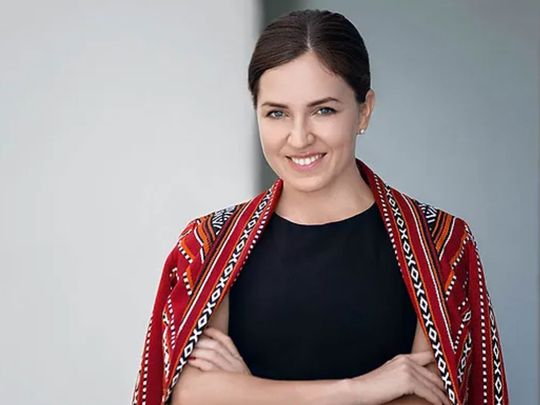
Dubai: Dubai-based Russian expat Katya Kovtunovich makes for a well-stitched UAE success story. The niche fashion designer, who came to Dubai in 2010, recollects how even back then, when she was trying to find her feet, a colourful winter coat she had sewn for herself would turn heads wherever she went.
“I was on a visit back home once, when I left my luggage at the train station while I completed some chores,” she recalled. “By the time I returned to collect it, I had misplaced the token. I was trying to explain what happened but the attendant cut me short. He said he remembered me from the winter coat I was wearing.”
“Such is the impact of Sadu, the fabric that the coat was made of. As the attendant told me, the coat, in striking red with geometric patterns in black and white, could hardly have gone unnoticed,” said Kovtunovich, who has sought to give the traditional Bedoiun upholstery material a high fashion twist.
Indeed, from the ubiquitous “sofa fabric” that is used at the local majlis to international haute couture, the story of the good old Sadu has been quite a weave.
Rich heritage
According to the Department of Culture and Tourism – Abu Dhabi, Sadu or Al-Sadu also refers to the technique of Sadu making in the UAE and is central to Bedouin culture.

Since ancient times, Emirati women have been known to sit together to weave the fabric from camel fur, goat hair or sheep wool into material for blankets, carpets, pillows, cushions, tents and the decoration of camel saddles and belts. Over time, of course, the handcrafted fabric has become rarer, with factory-made versions catering to market demand.
Urgent safeguarding
Because of Sadu’s significance, however, it was inscribed in 2011 on the UNESCO List of Intangible Cultural Heritage in Need of Urgent Safeguarding. It has been noted that the bearers of Al-Sadu are now mostly older women "whose numbers are declining.”
Now, it was around this time, that Kovtunovich chanced upon the fabric on the streets of Satwa.
Although she had moved to Dubai to take up a marketing job, the latent fashionista in her prompted her to visit the textile markets of old Dubai. “I had been to Bur Dubai and Deira where Indian traders largely sold fabrics from the Far East. When I was strolling down the market in Satwa, I came across a furnishing shop where the vibrant colours of the ‘sofa fabric’ caught my eye. And there was no looking back since.”
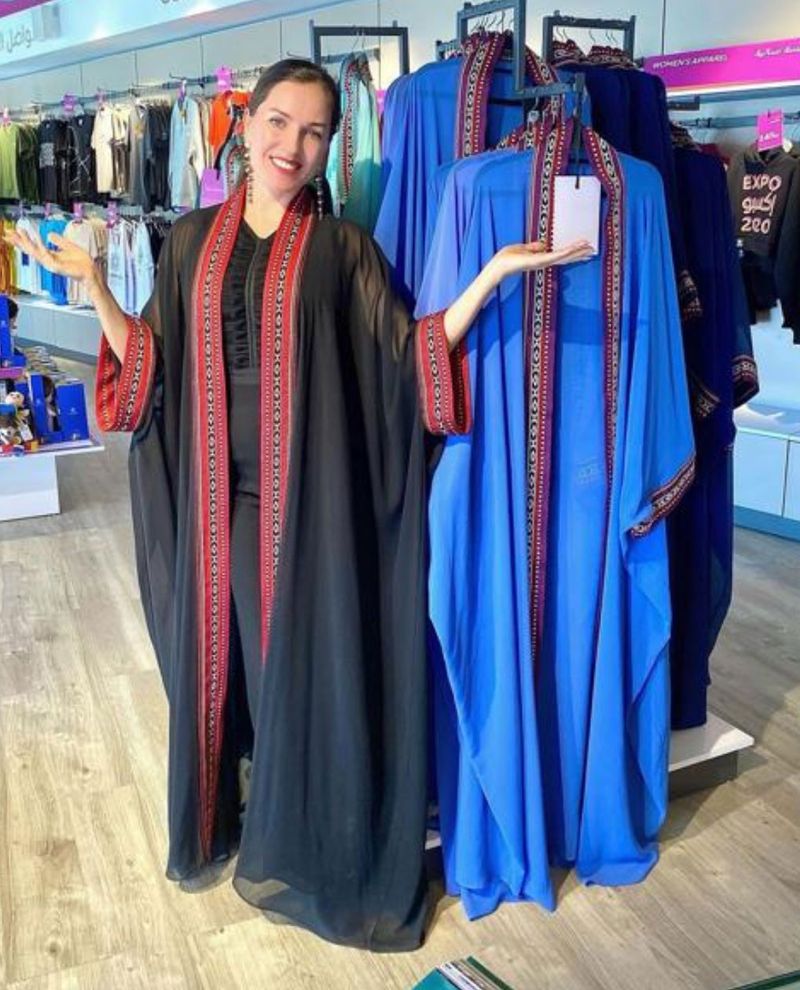
Kovtunovich, who comes from a family of modest means on the Russian island of Sakhalin, near Japan, said she started sewing for her Barbie doll at the age of seven and clothes for herself when she was nine. When she sighted Sadu, she knew it was her calling.
Inspired and empowered by the entrepreneurial spirit of the UAE, she decided to launch her own line of clothing in 2012, incorporating the traditional Sadu into her tunics, coats and other outfits.
“In 2015, my work with Sadu was recognised and I was invited to be part of a delegation representing UAE at Expo Milano 2015. My products were also made available at the souvenir shop in Expo2020 Dubai,” she said.
Kovtunovich, who counts top UAE officials and international celebrities and singers among her clients, said it was a huge acknowledgement of her efforts to embrace Sadu.
Much of the Sadu’s draw comes from its symbolism, she said, adding that the fabric is made in a wide range of vibrant shades including, red, green, blue, purple, black and white.
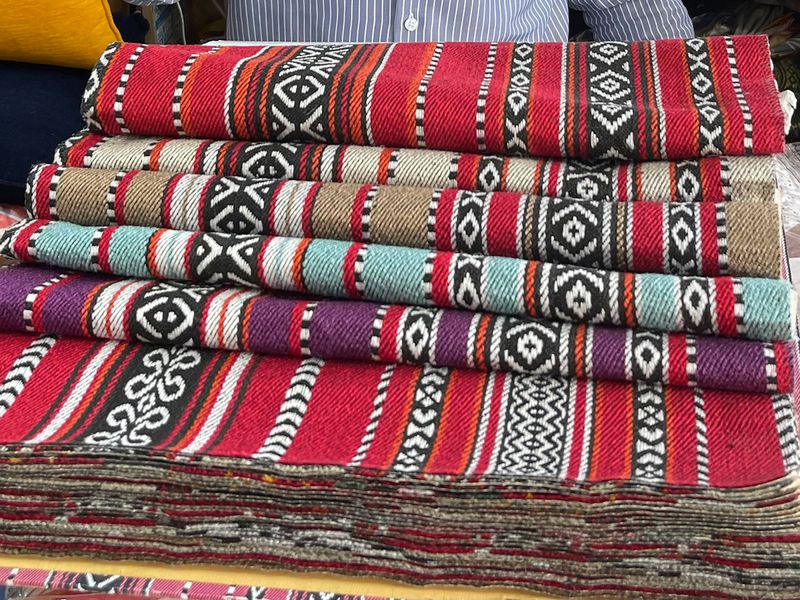
As the Abu Dhabi Department of Culture and Tourism points out, elements of the desert environment and other important aspects of Bedouin life are often incorporated into the Sadu designs, as symbols, shapes or inscriptions. Common motifs include geometric patterns evocative of the region’s undulating grasslands, sand dunes and the waves of the Arabian Gulf.
There are also symbols of palm trees, camels, sheep, falcons, dallah coffee pots and mosques while verses from the Holy Qur’an and wasem tribal symbols and names are popular. Some motifs express specific ideals, such as the chain with overlapping rings, which symbolise tribal unity and cohesion.
Kovtunovich, who has graduated from St. Petersburg State University in Linguistics, speaks five languages. “But no matter which part of the world we are from and what language we speak, there is a certain commonness when we look at our past – and that includes the history of fabrics,” she pointed out.
“The world over, fabrics were made the same way with the same natural dyes. We must cherish and celebrate this unity, no matter who we are, what we do or where we go,” she added.
How is Sadu traditionally made?
With its diverse designs, decorations and bright colours, Al-Sadu is a heritage art form in which Emirati creativity is reflected in the most beautiful ways.
Traditionally, women would gather in small groups to spin and weave these items, exchanging family news and occasionally chanting or reciting poetry, such as Al-Taghrooda.
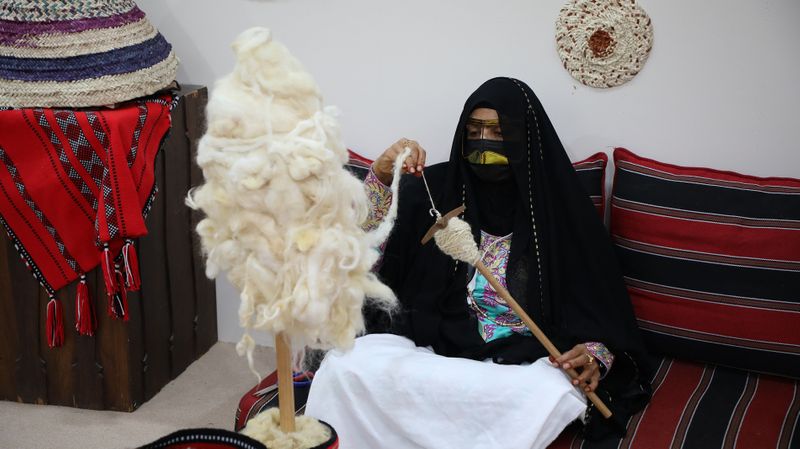
The Al-Sadu process begins with the cutting of the wool, fur or hair. It is then sorted according to colour and length. This material is then cleaned, by being blown and shaken to rid it of any plant matter, thorns, dust or soil. It is then soaked in hot or cold water three or more times, using soap or detergent powder for further cleaning. The material is blown to break it up into smaller pieces.
Next, the hair, fur or wool is spun into yarn using a drop spindle and then dyed – often in bright colours – using local plants and spices. These include henna, turmeric, saffron, cactus and indigo. Traditional Al-Sadu colours are black, white, brown and beige.
The yarn is then woven on a floor loom made from the palm tree. When a large quantity of Al-Sadu material is required, such as for a tent or for use at a wedding, several looms are used.
Sadu in Satwa
Shops selling Sadu can still be found in the bustling markets of old Dubai. A salesman in one of the furnishing shops in Satwa told Gulf News, “The material is very much in demand. We sell it by the metre.”
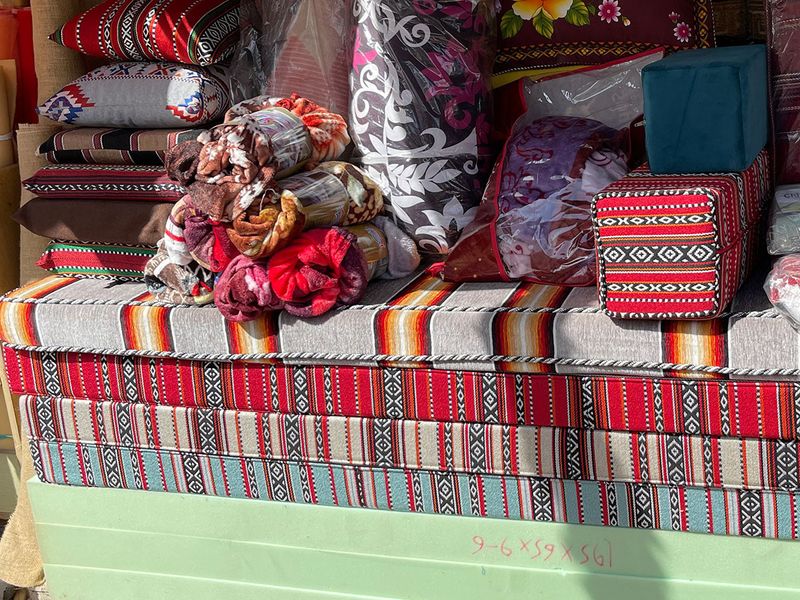
“We charge Dh25 a metre,” he said.
Another furnishing store down the road was selling the material at Dh35 a metre.
“You can choose whatever colour you want,” said the storekeeper, showing a catalogue of Sadu fabric in a variety of hues. “The price remains the same.”


